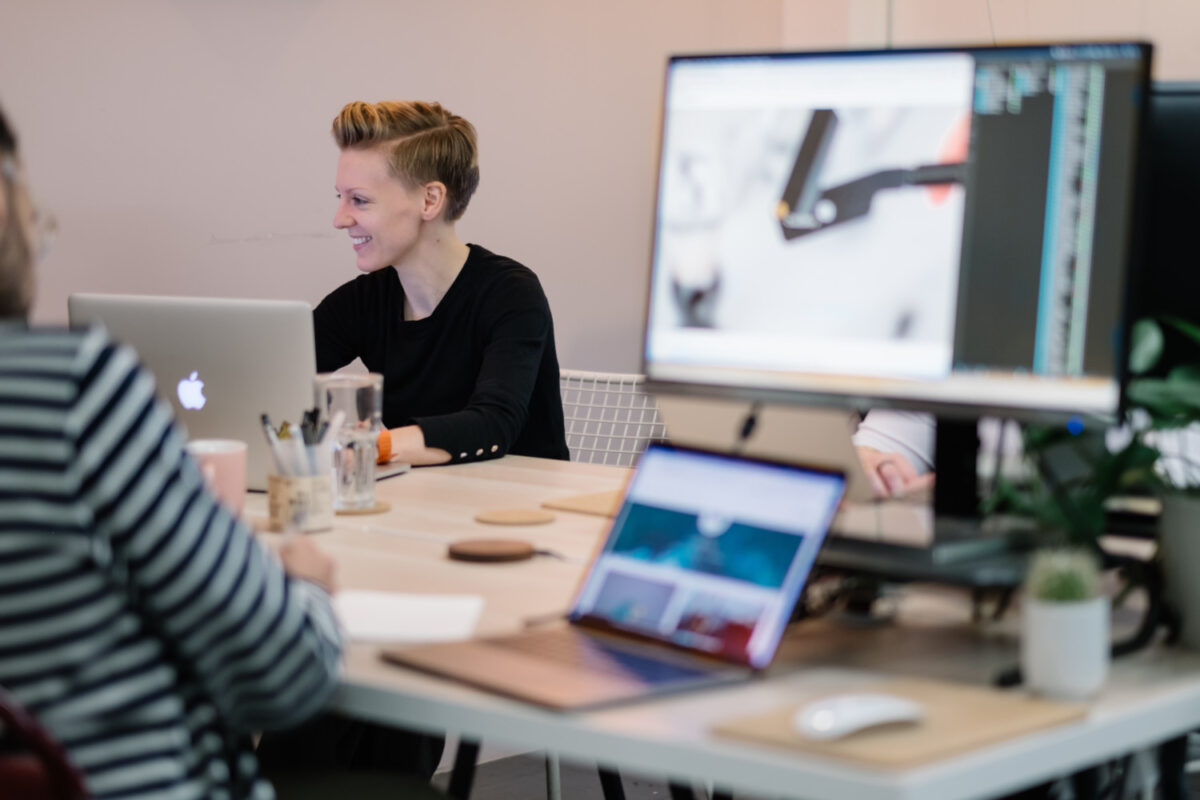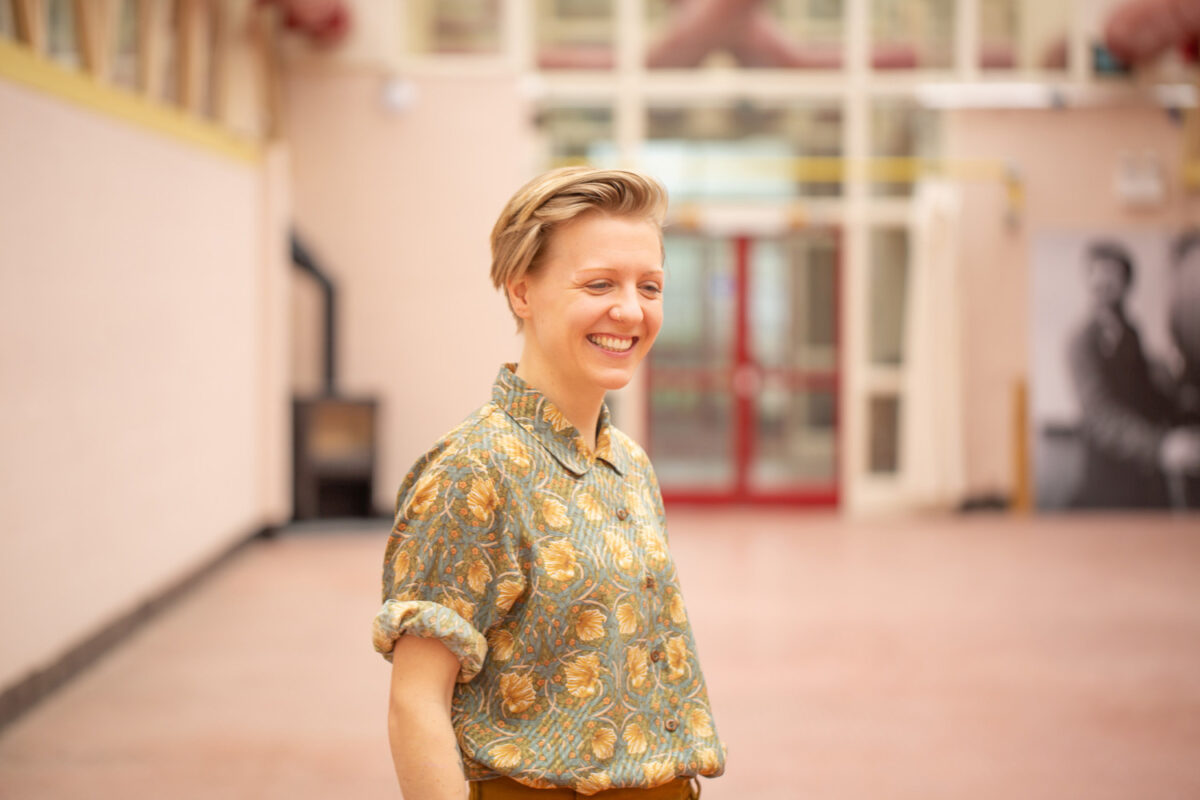Jo Barnard, Founder and CEO of Morrama - the design agency behind the world's first zero-plastic refill deodorant Wild and the inclusive unisex Allbody razor? Jo is an experienced designer, who founded industrial design and innovation agency studio Morrama just one year after graduating from university. A champion of female empowerment within design and of the role of sustainability to create a better design industry, Jo has established an incredible understanding of all things design, from the idea curation phase right through to manufacturing and distribution as she continues to push the boundaries of innovation with Morrama on a day-to-day basis.
I had the pleasure to discuss with her more about inclusivity design, its importance, and the future of sustainable product design.
Tell us a little bit about your professional background
After graduating from Brunel University with a BSc degree in Product Design in 2014, I began freelancing as an industrial designer but always had ambitions to start my own agency. At 24, together with a fellow design grad I decided to go for it. Seeing a need for an agency that focused on design and innovation for start-up companies that look to push boundaries and challenge market assumptions, Morrama was born.
Our process is very much about the why as well as the what and how. Starting every project by questioning the rationale behind a client's vision and helping them rewrite the story they wish to tell through their brand and product. The result is a portfolio of thoughtful, considered products with a cohesive aesthetic, a clear reflection of our passion for beautiful and simple design.
Our start-up clients include Wild Cosmetics, Apex Rides and Elvie and we’ve also launched a few of our own products under the Studio Morrama brand. This has given us real insight into the behind the scenes work that goes into creating, launching, and selling products both in the DTC and retail space.
Along the way we have picked up a collection of design awards including 3 D&AD pencils. I’ve since been fortunate enough to be on the D&AD Awards Jury in the Product Design category.
What is inclusive design?
For me, inclusive design relates to two things. Firstly, how the product is designed - ensuring the design team represents diverse experiences and being consciously inclusive of who should be ‘in the room’ when decisions are made. Secondly, the products have to serve the needs of a wide range of people. One doesn’t imply the other, but typically if you are inclusive in the design process itself, the result is more likely to be so too.
You only must type in ‘diversity and innovation’ into Google to get article after article about why diverse and inclusive teams are the engines of innovation. It’s not going to be the ultimate solution, but if we truly want to meet the needs and expectations of the consumer, solving the lack of representation in the design community by opening various channels of recruitment is a good place to start.
What is its importance?
We live in a world where most of the products we interact with are designed by Caucasian cisgender men. The subtle bias against women, people of colour and LGBTQ+ people are not always obvious but exist in the everyday. Some examples of this include Apple Health launching without a simple period tracking function, cars being 71% less safe for women because crash test dummies are based on the male physique, and voice recognition technology that can’t understand women due to algorithms tested on male data sets. Something even more relevant is that PPE puts women at risk as it is designed for men, even though 75% of the NHS staff force are women. This problem is caused by a lack of gender balanced data. If we want to create products that work for both men and women, fundamentally we have to update this data and close the gap.
This problem isn’t exclusively a gender issue; inclusive design is important so that everyone can use a product safely and easily. Great, universal design is achieved by questioning how we could improve the users’ experience and looking at it from their perspective.
What is the role of female design input as a source of innovation and growth within the design sector and stereotyping within the industry?
We have a big part to play in changing perceptions in the industry. Growing up with a passion for design and then studying in higher education, there were no female industrial designers to look up to. Even my lecturers at university were all male, then when I landed my first design job, all the other designers were men. Research by the Design Museum puts the percentage of women in design in the UK at 22%. This lack of representation makes it hard for young female designers to see their place, and to know that success at a high-level is possible in the industry.
Despite my position, I have had to work very hard to find and establish connections with other women in design, and it shouldn’t be that way. Fortunately, more awareness of the importance of inclusivity in design is encouraging companies to actively seek and hire female creatives. This is beginning to place women in powerful positions in the industry, and I’m excited to see how this starts to shift the gender balance over the course of time.
How do you see the future of sustainable product design?
Five years ago, sustainability wasn’t a crucial objective in design briefs we received - in fact, it was hardly ever mentioned. Today every client expresses their concern for sustainability. It’s clear there is progress in this area, but as innovators we still need to apply the pressure on large incorporations, and the small start-ups.
The biggest challenge we face now is greenwashing. Brands mislead users into thinking something is more environmentally friendly than it is, because of the lack of widespread information. Tote bags are a prime example. To have the same overall environmental impact over its lifetime as a plastic bag used just once, you would need to re-use a tote bag thousands of times and yet they are put on a pedestal as an example of ‘green design’ and handed out free at every event I’ve ever been to. As designers, we must continue to educate ourselves on topical subjects, such as the environment, to ensure we are educating consumers and encouraging behaviour changes through our designs.
Another forecast is the need for material innovation. Whether this is driven by sustainability, or exceeding material costs as we run out of raw materials, we expect to see more substitutes for the likes of plastic over the next decade. The question yet to be answered is whether many of these ‘eco materials’ are ethically and environmentally better and perhaps developing a better recycling infrastructure is the right direction to take in our quest for a truly circular economy.


